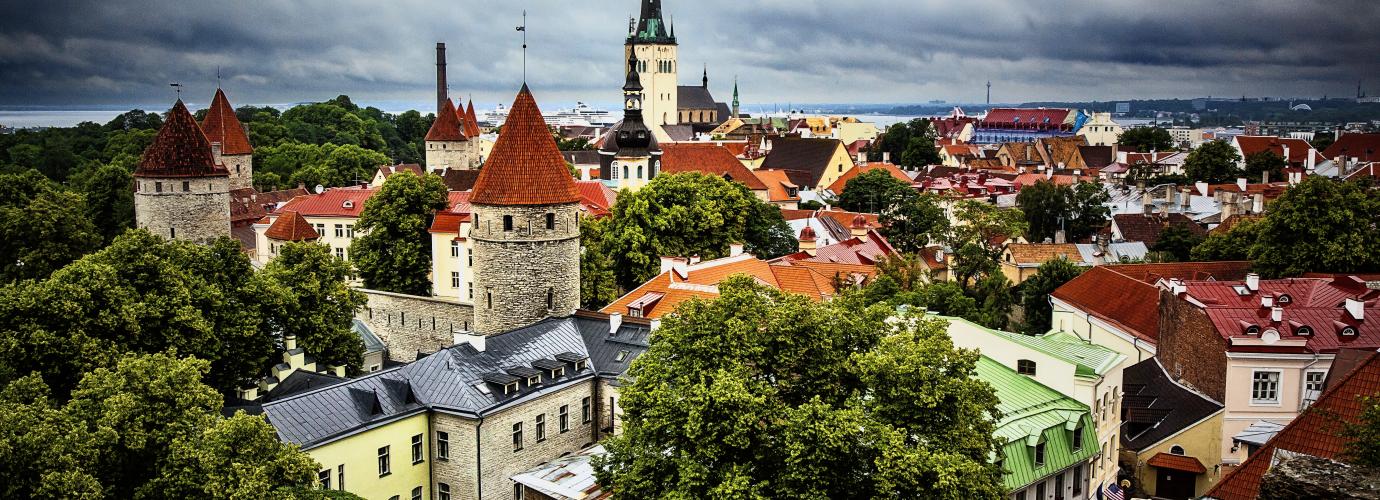The national curriculum for preschool child care institutions allows preschool child care institutions to apply alternative pedagogy. Some of the privately owned preschool child care institutions use alternative pedagogical methods that correspond to the institution's general approach (Waldorf-preschool child care institutions, Christian preschool child care institutions, etc.). Alternative pedagogy is also implemented in preschool child care institutions for children with special needs. Pedagogues are responsible for the effectiveness of the methods of instruction they use.
Among private preschool child care institutions, also English language based preschool child care institutions exist (for children of the relevant community).
Most preschool child care institutions where the language of instruction is Russian are municipal preschool institutions. Traditionally, child care institutions have been divided according to the language of instruction into Estonian and Russian, or they were mixed. The need for forming groups with Russian as the language of instruction is consistently diminishing since an increasing number of parents want their children to attend groups instructed in Estonian. Since 2009, the state has financed studies of Estonian as a second language in preschool child care institutions, including the purchase of study materials. Support has been allocated for providing language training for 3-7-year-old children in groups with a language of instruction other than Estonian and promoting language immersion, and to groups providing support study of Estonian as a second language.
In 2018, the Ministry of Education and Research launched a pilot project “Professional Estonian-speaking teacher in a Russian-language kindergarten group”. The aim of the pilot program is to ensure equal opportunities for all children in preschool education and proficiency in the Estonian language, which is necessary for acquiring basic education.
The aim of the project is to improve the quality of Estonian language instruction and the activities include supporting the professional development of teachers, developing the language environment in kindergartens and creating a science-based early language learning system. According to the draft Preschool Education Act, Estonian will be the language of instruction for preschoolers from the age of 3, so by 2024, early Estonian language instruction must be provided in all kindergartens where the language of instruction is Russian.
The pilot project training programme and study materials have been developed in cooperation with Tallinn University, Innove Foundation, local governments and kindergartens. The training supports the professionalism of teachers in the kindergarten group team and the competence of teachers in early language instruction. The training is based on a research-based approach to supporting preschool language development, the national curriculum for preschool institutions and the European Language Portfolio for Preprimary Education (Goullier, Carre-Karlinger, Orlova & Roussi, 2015). Estonian-language teachers together with the group team (Russian-speaking teachers) and the kindergarten director participate in the training. The project supports collaborative learning, where the learning of the Estonian language takes place through play in cooperation with a Russian and Estonian language teacher and covers all learning and educational activities, including music, movement and art activities, as well as daily communication and activities. Attention is paid to the development of team culture and cooperation with parents.
In 2020/2021, there are Estonian-speaking teachers, whose salaries, training and teaching aids are supported by the state, in 103 groups of 3-7-year-old children with Russian as the language of instruction. In 2018/19, 21 kindergartens started implementing the pilot project, ten of which are located in Tallinn and 11 in Ida-Viru County. From 2020/21, the pilot project expanded to 32 kindergartens. For 2021/22, it is planned to recruit 100 new Estonian-speaking teachers to 100 groups with Russian as the language of instruction.
The most widespread methodologies put into practice in preschool child care institutions are the so-called StepbyStep Methodology, Reggio Emilia approach and Montessori approach, the environment of which allows also the application of other active teaching methodologies (discovery learning).
Both children attending preschools and those staying at home are increasingly offered hobby classes, and parents various trainings. Attending such classes may be free of charge for the parents or it may have minimum fees (financially supported by local governments).
At preschool child care institutions there are play groups and Estonian language study groups for children staying at home; such groups are generally payable but are sometimes supported by local governments.
The so-called "baby schools" for children of 2 to 8 months of age and their parents are very popular. Baby-schools operate both in the municipal preschool child care institutions and as private institutions and are, as a rule, payable for parents. In baby schools, the development of a child’s creativity is supported through music, rhythm and manual activities. Primarily, the result of baby schools is that parents together with the child acquire skills to act together.
A childcare system was developed in Estonia in 2006/2007 and implemented in 2006 as a social service. According to the data of the Ministry of Social Affairs, 10% of 1.5-3-year-old children are in childcare in 2020.
With a view to ensuring access to high quality preschool education and childcare for all children aged 1.5 to 7 years whose parents so request, a common preschool and childcare system based on the needs of children and families is being developed. The provisions regulating childcare services will be removed from the Social Welfare Act and preschool child care institutions and childcare service providers will be subject to a common Preschool Education Act, which decreases over-regulation and provides local governments with greater decision-making powers on organisational issues. The professional standard for childcarers has been revised and increased attention has been devoted to the competencies related to supporting a child’s development and special needs. Non-formal childcare, including home care, is provided to parents by the private sector and, if possible, a local government.

